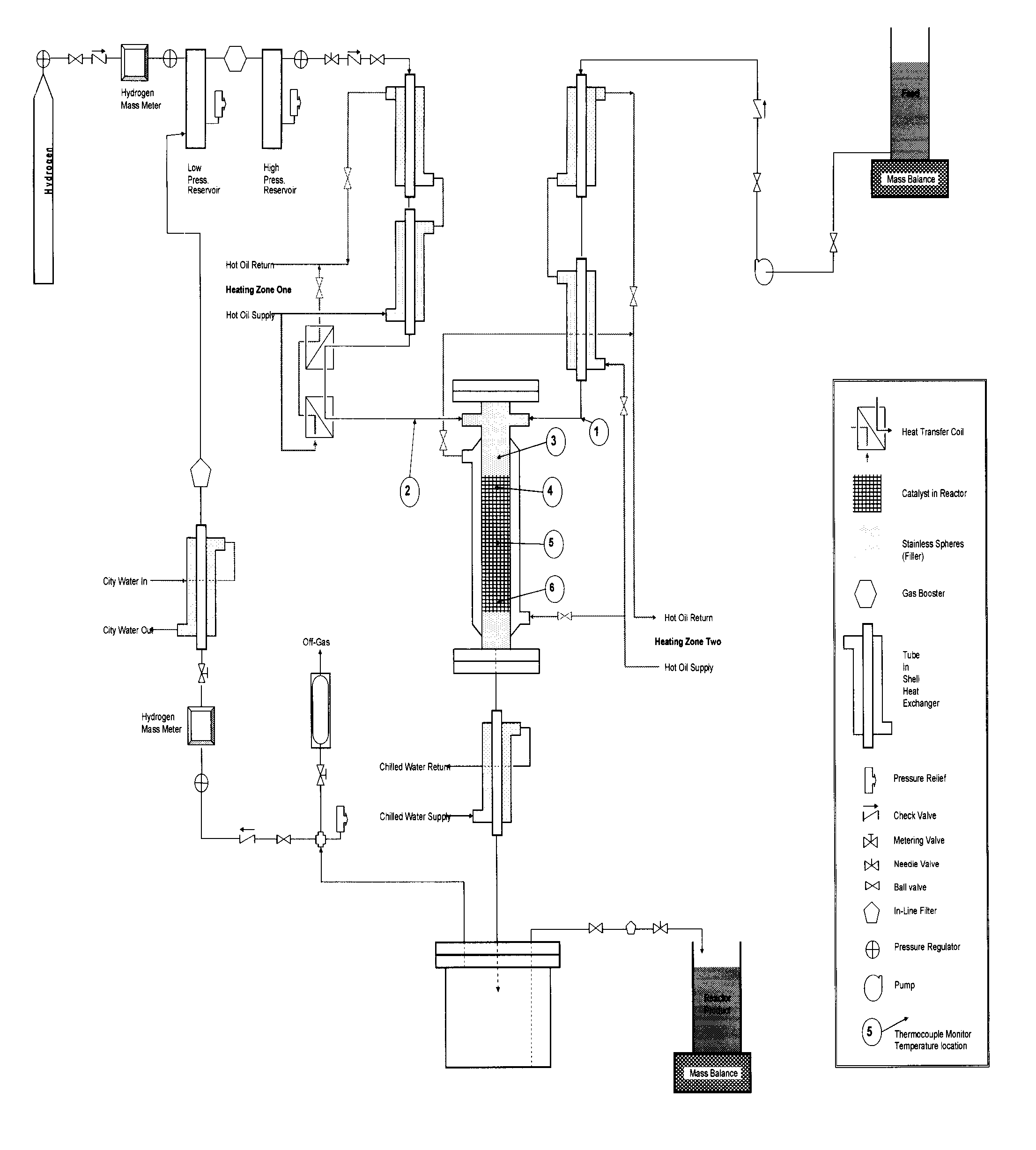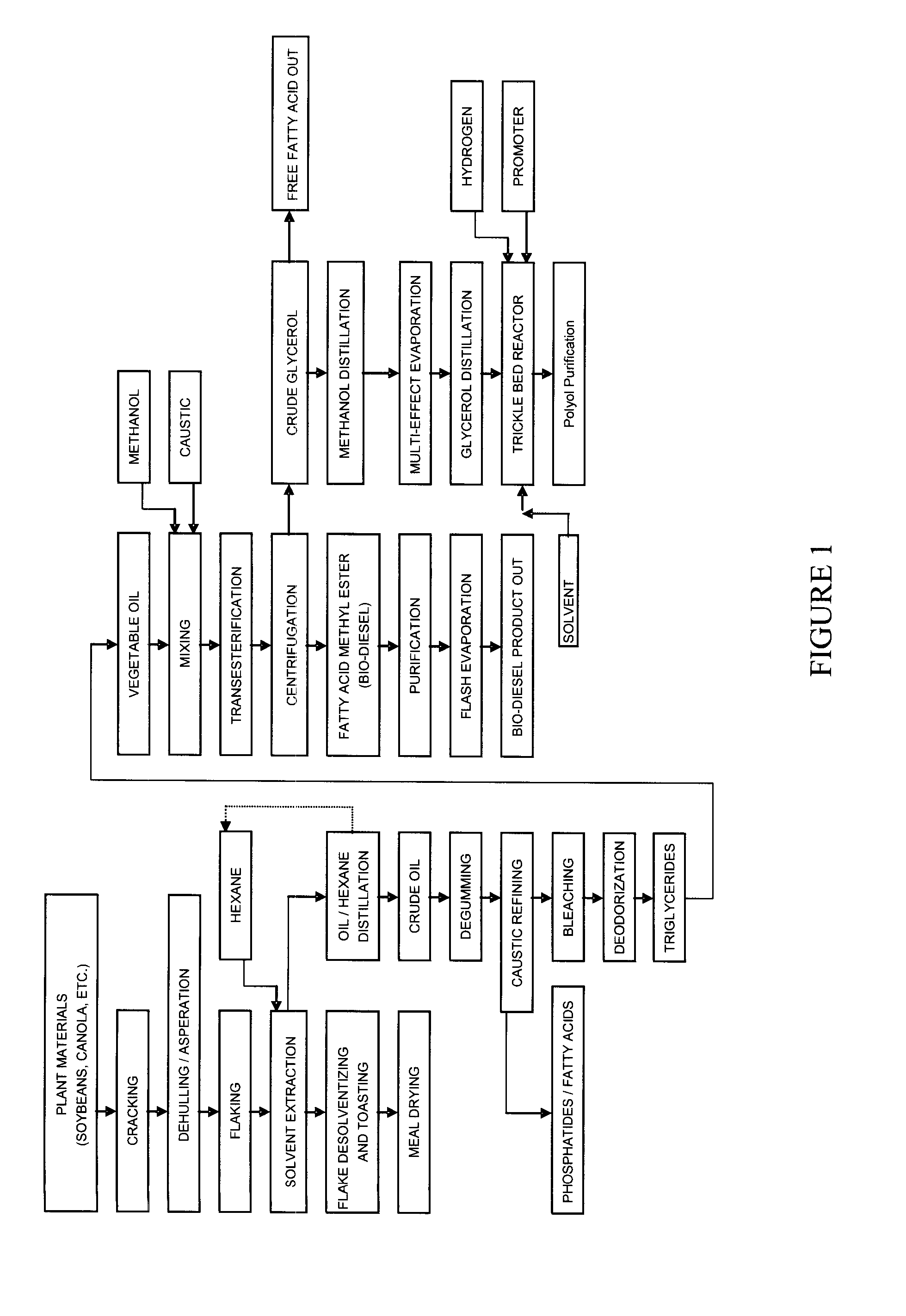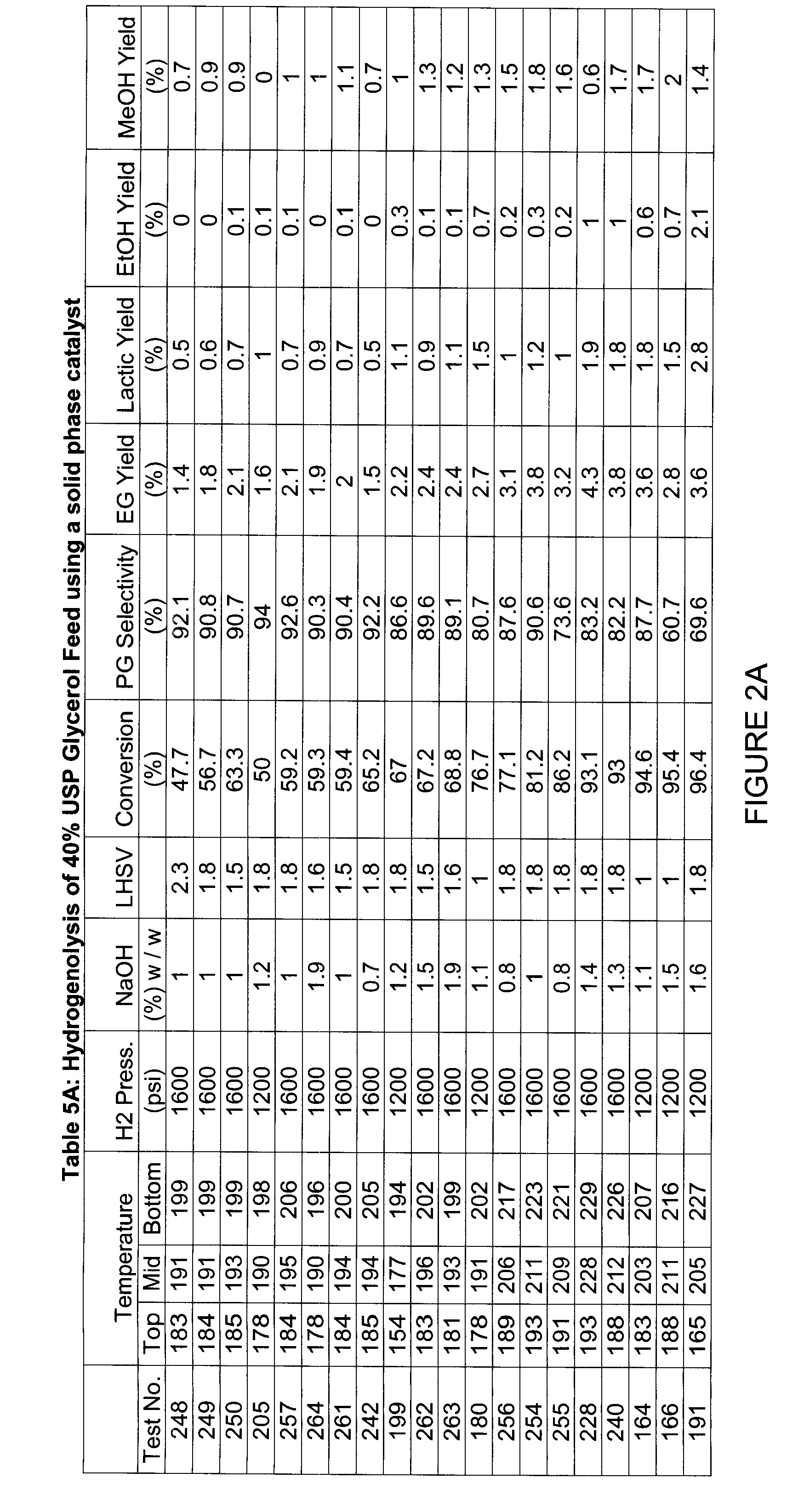Hydrogenolysis of Glycerol and Products Produced Therefrom
a technology of glycerol and hydrolysis process, which is applied in the preparation of oxygen-containing compound, organic chemistry, and oh group elimination. it can solve the problems of difficult to achieve the separation of substantially pure propylene glycol, the problem of product mixture (derivative) presenting a problem for sale and use, and the difficulty of distillation of diols from propylene glycol
- Summary
- Abstract
- Description
- Claims
- Application Information
AI Technical Summary
Problems solved by technology
Method used
Image
Examples
example 1
[0062]A series of studies were conducted in a 2000 ml high-pressure Stainless Steel 316 reactor. As described in FIG. 1, a solid catalyst similar to the “G” catalyst disclosed in U.S. Pat. No. 6,479,713 or the “HC-1” catalyst available from Sud Chemie (Louisville, Ky.) was loaded in the reactor to a final volume of 1000 ml of catalyst. The reactor was jacketed with a hot oil bath to provide for the elevated temperature for reactions and the feed and hydrogen lines were also preheated to the reactor temperature. A solution of a bio-based, substantially pure, 40% USP grade glycerol was fed through the catalyst bed at LHSV ranging from 0.5 hr−1 to 2.5 hr−1. Hydrogen was supplied at 1200-1600 psi and was also re- circulated through the reactor at a hydrogen to glycerol feed molar ratio of 5:1. In other embodiments, the hydrogen to glycerol feed molar ratio may be between 1:1 to 10:1. Tables 5A and 5B in FIGS. 2A and 2B describe the results with hydrogenolysis of 40% USP grade glycerol f...
example 2
[0063]Example 2 describes a method to reduce the formation of BDOs and maximize the conversion of glycerol to propylene glycol with a solid phase catalyst such as the “G” catalyst as disclosed in U.S. Pat. No. 6,479,713 or the “HC-1” catalyst available from Sud Chemie (Louisville, Ky.). Hydrogenolysis of a 40% solution of glycerol was carried out substantially as described in Example 1. Table 7 in FIG. 4 describes the conditions used in this Example, and discloses the products produced in this Example.
example 3
[0064]Hydrogenolysis of a 40% solution of glycerol was carried out substantially as described in Example 1. The effect of the reaction temperature at constant concentrations of alkali (sodium hydroxide) and constant LHSV on the amount of BDO formed was investigated. Table 8 in FIG. 5 describes the conditions used in this Example, and discloses the products produced in this Example.
PUM
| Property | Measurement | Unit |
|---|---|---|
| temperature | aaaaa | aaaaa |
| pressure | aaaaa | aaaaa |
| temperatures | aaaaa | aaaaa |
Abstract
Description
Claims
Application Information
 Login to View More
Login to View More - R&D
- Intellectual Property
- Life Sciences
- Materials
- Tech Scout
- Unparalleled Data Quality
- Higher Quality Content
- 60% Fewer Hallucinations
Browse by: Latest US Patents, China's latest patents, Technical Efficacy Thesaurus, Application Domain, Technology Topic, Popular Technical Reports.
© 2025 PatSnap. All rights reserved.Legal|Privacy policy|Modern Slavery Act Transparency Statement|Sitemap|About US| Contact US: help@patsnap.com



